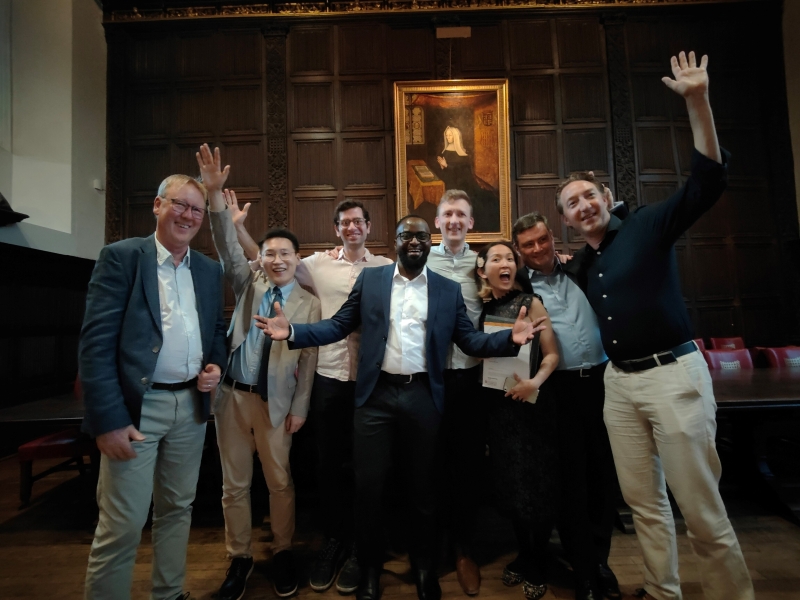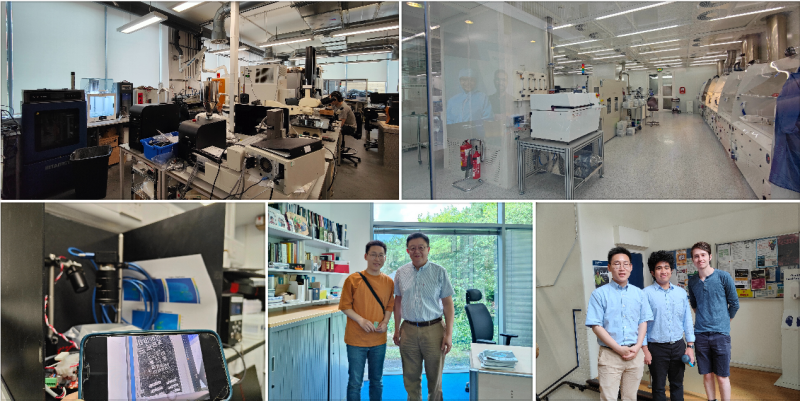- HOME
- About AIS
- Study Abroad Program
- Clare Hall, University of Cambridge Summer Visiting Student Program Report
Clare Hall, University of Cambridge Summer Visiting Student Program Report
2023 Academic Year
BOWEN LIU: PhD candidate, Department of Advanced Interdisciplinary Studies, Graduate School of Engineering, The University of Tokyo
Overview
I am honored to be able to visit Clare Hall of the University of Cambridge with Ricky as the only two summer program participants from the University of Tokyo this year, and have spent an unforgettable July with the faculty and students there. After a 20-hour flight, we finally arrived in London early in the morning at the end of June. On the bus to Cambridge, I enjoyed the British romantic streets and tranquil countryside scenery — everything is new for me. The excitement and nervousness overshadowed the fatigue of the journey. As it turns out, I ended up having a pretty fulfilling summer. People are personable, enthusiastic and willing to share. I met and talked with many energetic students, thoughtful researchers, and prestigious professors, and gained valuable insights from them. The collision of ideas is a virtue in Clare Hall.
Judge Business School
The first week was spent at the Judge Business School at the world-renowned Cambridge ecosystem. It was my pleasure to have this rare opportunity to receive Ignite business training together with 36 delegates from 9 countries and regions. Every morning we listen to lectures on business knowledge and case studies provided by entrepreneurial guests. In the afternoon, group discussions were held to shape ideas and practice pitch skills with the help of tutors. Ignite program also invited Lord Karan Bilimoria, the founder of Cobra beer, and Dr. Hermann Hauser of Amadeus Capital Partners to give speeches, explaining their start-up stories and journey through key business decisions. Innovation means being different from others. Even simple ideas like mixing different beers into a new flavor — have huge potential for success. On the last day of training, everyone received one-on-one clinic consultation.Then a business pitch was conducted. I introduced my research results and entrepreneurial plan on high-performance hybrid tunable lasers to the interviewers.

Fig. 1. Group photo at St. John's College dinner.- The current mainstream commercial solutions focus on high energy, which is important for laser processing and welding. However, the demand for functional lasers is increasing day by day, and the products do not well meet the requirements of high performance, versatility and low cost. Especially for artificial intelligence-assisted driving, there has always been controversy about the technical routes of lidar and machine vision. A high-performance light source will greatly enhance its vision, while the high price limits its competitiveness. If the research results can be translated into commercial projects, it will hopefully change the situation. After Ignite training, I learnt the basic business background and logic that I was expected, and further concreted my plan. Here I would like to deliver special thanks to my mentor Reinhard Eschbach and facilitator Cyrus Ordoobadi for their generous help.
Visiting Activities
In the next three weeks, I visited the Cambridge Graphene Center (CGC), the Center for Advanced Photonics and Electronics (CAPE) and the Nano Science Centre. I met with the research teams of Professor Tawfique and Professor Dapin Chu to learn about the work they do and the challenges they face. At CGC, I saw cutting-edge complete solutions for 3D printing based on carbon-based materials. These studies also have important applications in my field of laser photonics. Carbon-based materials such as CNT and graphene can be used for ultrafast pulse excitation, and combined with additive manufacturing technologies such as 3D printing, cutting-edge optoelectronic devices can be produced, greatly improving the performance of existing devices. At CAPE, Ben introduced me to the research and development platform and production line of flexible display materials. Moreover, I was luckily able to interview Professor Dapin Chu and gained valuable experience and career wisdom on how young researchers grow. The researchers were passionate, and the professors were elegant and kind. In addition, I also visited well-known institutions inside and outside Cambridge such as the Cavendish Laboratory and University College London, Imperial College London, and the biomedical photonics team in Tyndall of University College Cork. This greatly expanded my horizons. What’s more important is being able to get in touch with frontline scholars and understand the ecology, ideas, and challenges of the research communities they represent. I think it is a very important academic practice.

- Fig. 2. Photos at CGC, Tyndall, CAPE, Nano Science Centre and Imperial ( from top left to bottom right ).
Clare Hall
I was also impressed by the diversity in Clare Hall. I attended formal dinners and met some people doing very imaginative work. They have different backgrounds, some study the universe and astrophysics, some study aerospace, and some are engaged in the promotion of science and technology and finance. It's a pleasure to talk to them.
Overall, this was an enlightening learning journey. What is different from traditional summer schools in most of East Asian areas, interpersonal interaction and free exploration are the main formats, rather than textbook knowledge. People meet, people talk, knowledge and insights are exchanged, innovations are proposed. We are supplemented by others and induced to look within for strength and wisdom. This also allowed me to review my research and helped develop social skills and the ability to organize logical speeches. Immersive free study is also a deeper experience than paperwork preaching.



